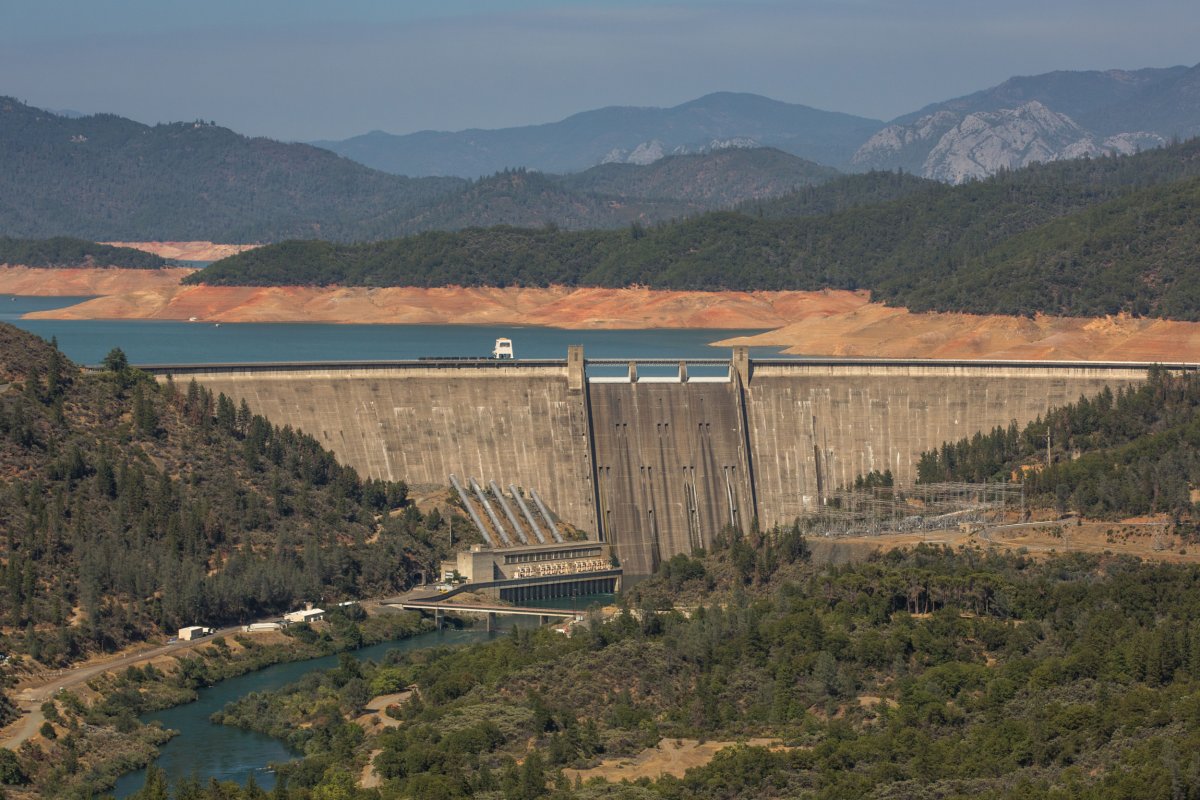Water levels have plunged by nearly 7 feet at Lake Shasta over the course of the week as officials prepare for more precipitation from an incoming storm.
After years of drought, several reservoirs in California reached concerningly low water levels in the summer of 2022. However, an abnormally wet winter last year alleviated much of the state's drought and replenished the lakes. For example, Lake Shasta, the state's largest reservoir, neared capacity last year.
Now, after a series of atmospheric rivers that have saturated the state, the U.S. Bureau of Reclamation is voluntarily releasing water from Shasta Dam because the lake's levels are too high for February, according to Don Bader, the area manager for the U.S. Bureau of Reclamation.

Bader told Newsweek that the releases, also known as "flood operations", began on January 31.
The last time officials had to conduct flood operations at the lake was in 2019.
"Last winter stored everything came in," Bader said, adding that typically flood operations occur at Lake Shasta once every five years. "We are dialing them down and reducing flows this week."
However, there's a chance flood operations could resume if more storms hit California in March.
Despite the release, Lake Shasta is still in a much-improved state when compared to last year. As of Friday morning, Lake Shasta water levels were at 1,038 feet. This time last year, the lake was at 996 feet, and in February 2022, the lake was at 938 feet.
It's not the first time officials have voluntarily released water from a California reservoir this year. In February, the California Department of Water Resources opened the spillway at Oroville Dam at Lake Oroville to release water ahead of moisture-laden winter storms. The water was recaptured downstream, and the release provided flood mitigation for downstream communities.
Even with the recent release, Lake Shasta is still 26 feet higher than it was at the start of the year. The lake is expected to receive more water inflow in the coming weeks as a winter storm brings multiple feet of snow to some high-elevation areas. Rain is expected for lower-elevation areas.
Six weather warnings were in place throughout California on Friday as a massive storm threatened to dump more than 100 inches of snow in some high-elevation areas in less than 72 hours over the weekend. The National Weather Service (NWS) warned of heavy snow in the higher elevations of Shasta County, which is where Lake Shasta is located.
"Total snow accumulations of 1 to 4 feet, locally higher over peaks. Winds gusting as high as 60 mph," the winter storm warning said.
The warning was issued early Friday morning and will remain in place through Sunday night.
The excessive snowfall is expected to vastly improve California's snowpack levels, which were below normal before the winter storm. California relies on snow melt through the spring to supplement as much as a third of the state's water supply.
Uncommon Knowledge
Newsweek is committed to challenging conventional wisdom and finding connections in the search for common ground.
Newsweek is committed to challenging conventional wisdom and finding connections in the search for common ground.
About the writer
Anna Skinner is a Newsweek senior reporter based in Indianapolis. Her focus is reporting on the climate, environment and weather ... Read more
To read how Newsweek uses AI as a newsroom tool, Click here.








